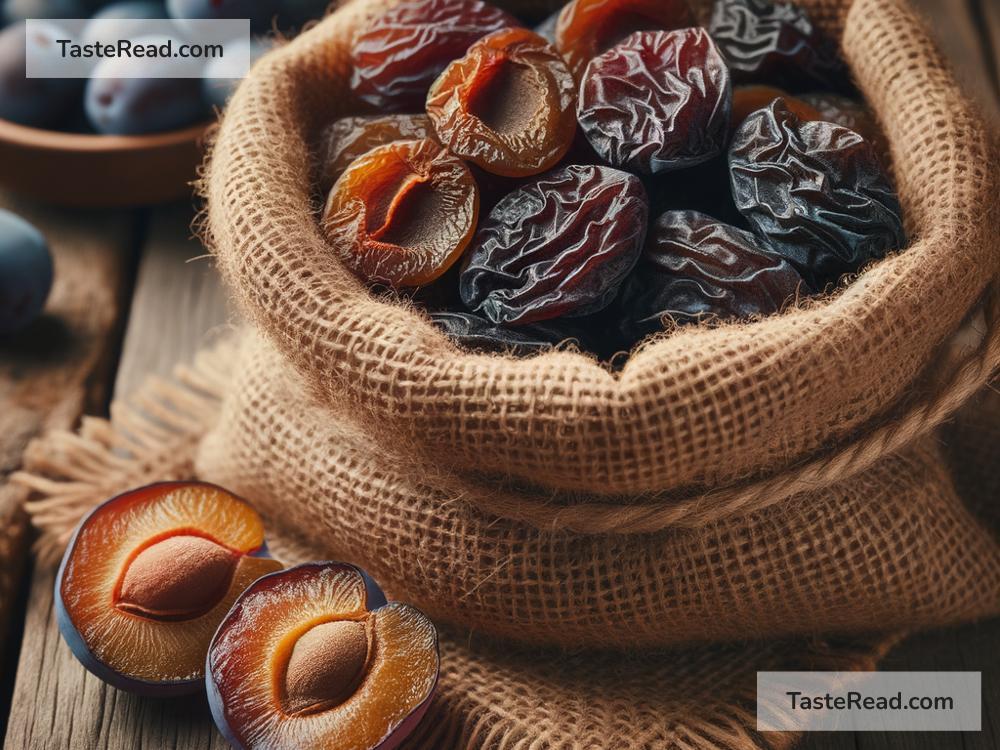Why Dried Plums Are Called Prunes: A Simple Explanation
When it comes to dried fruits, people are often familiar with raisins, apricots, and figs. But one name that might cause some confusion is prunes. If you’ve ever wondered why dried plums are called “prunes,” you’re not alone! It’s an interesting question with roots in language, history, and marketing. In this blog post, we’ll explain the origins of the name “prunes” in simple terms and explore why this dried fruit isn’t just called “dried plums.”
1. What Are Prunes, Exactly?
First, let’s clarify what prunes are. Prunes are simply plums that have been dried. Plums are juicy, round, purple or reddish fruits that grow on trees. Not all plums are made into prunes, though—there are specific types of plums, called prune plums, that are grown because they work best for drying. These plums have a dense texture and high sugar content, which allow them to dry naturally without fermenting or spoiling.
When a plum is dried, it becomes smaller, darker, and chewier. Its natural sweetness is concentrated, making prunes a tasty and nutritious snack. They’re high in fiber, vitamins, and antioxidants, and are even known for helping digestion.
2. Why Are Dried Plums Called Prunes?
The name “prune” actually goes back hundreds of years, and it has to do with language. The word comes from the Old French word “prune,” which simply means “plum.” The French word itself originated from the Latin word “prunus,” which also referred to plums.
So, originally, the word “prune” wasn’t specific to dried plums—it referred to any kind of plum, whether fresh or dried. Over time, in English-speaking countries, people started using “prune” only for the dried version of the fruit. Fresh plums continued to be called “plums,” while their dried counterparts took on the name “prunes.”
Think of it like how grapes and raisins are named. Both are the same fruit, but raisins are dried, so they get their own name. Similarly, a plum becomes a prune when it’s dried.
3. Marketing Made Things More Complicated
In recent years, there’s been some debate over the word “prune.” While prunes are healthy and delicious, they’ve often been associated with older people or use as a digestive aid—not exactly the most glamorous image. As a result, some marketers decided to rebrand prunes as “dried plums.”
This shift started in the United States in the early 2000s. The California Prune Board, which promotes prunes grown in California, officially changed its name to the California Dried Plum Board. They hoped this new name would make prunes sound more appealing to younger people and a broader audience. After all, many people who enjoy dried fruit might buy them just for their flavor or nutrition, not necessarily for digestive reasons.
Even though “dried plum” is technically a more accurate description, the name “prune” hasn’t disappeared. Many people still call them prunes because that’s what they’ve been called for centuries. You’ll find both terms used interchangeably depending on the brand or country.
4. Are Prunes and Dried Plums the Same Thing?
Yes, prunes and dried plums are the same thing. They come from the exact same fruit—plums—and go through the same drying process. The only difference is the name. If you see a package labeled “dried plums” at the store, rest assured they’re prunes!
While the word “dried plum” might sound more modern or appealing, “prune” has a long-standing place in culinary history. Many recipes, like prune cake or prune-stuffed pork, continue to use the original name.
5. Fun Facts About Prunes
Here are some fun, easy-to-remember facts about prunes:
– They Don’t Need Added Sugar! Prunes are naturally sweet, so no extra sugar is needed during the drying process.
– They Were Famous in Olympics History: At the 1932 Summer Olympics, the U.S. men’s rowing team credited prunes as their secret weapon for energy.
– France Loves Prunes: In France, prunes from the region of Agen are considered a special delicacy and are often enjoyed in desserts or paired with cheese.
6. Why Should You Try Prunes?
If you’ve never tried prunes (or dried plums), don’t let the name fool you—they’re delicious! Prunes have a rich, fruity flavor with hints of caramel. They’re also packed with nutrition. Just a handful of prunes offers fiber to support digestion, potassium for heart health, and antioxidants to fight cell damage.
Prunes aren’t just for eating plain, either. They can be mixed into trail mix, blended into smoothies, or added to baked goods for natural sweetness. You can even use prunes in savory dishes like stews or sauces for a pop of flavor.
7. Conclusion
So why are dried plums called prunes? The name goes back to old French and Latin, where “prune” simply meant “plum.” Over time, English speakers reserved the name “prune” for the dried version of the fruit. While modern marketing sometimes prefers the name “dried plum,” prunes have a long history that gives them an identity of their own.
Next time you see prunes on the shelf, you’ll know the story behind their name—and maybe you’ll be inspired to give them a try. After all, whether you call them prunes or dried plums, they’re a tasty fruit snack that’s hard to resist!


